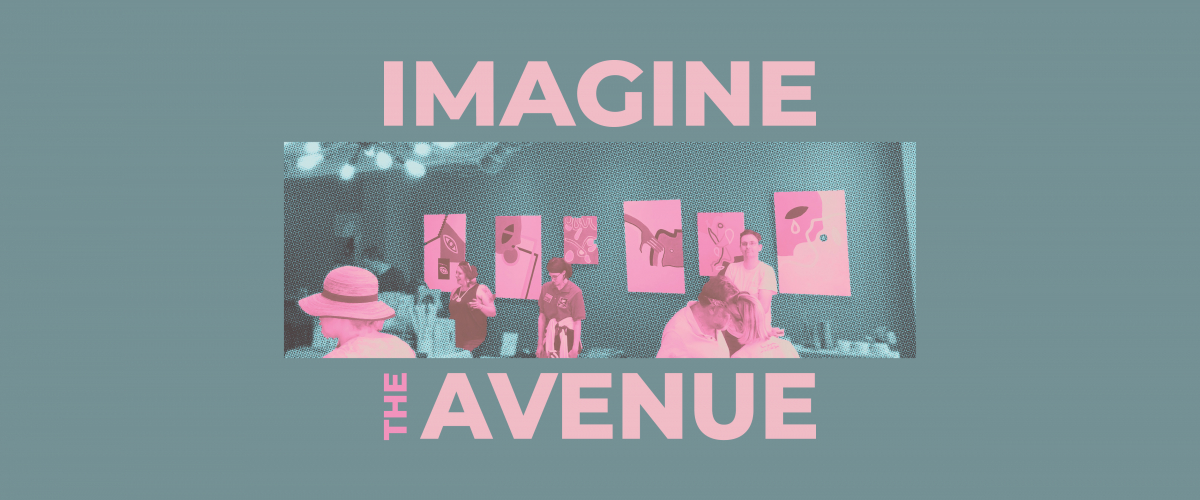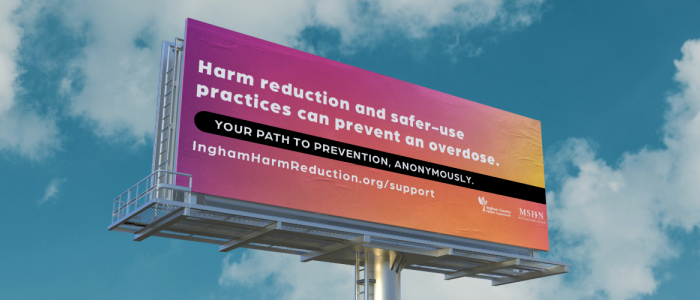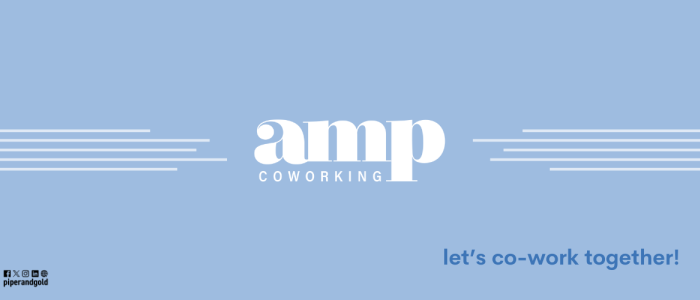
Beyond the Bling: Imagine if municipal feedback were fun
May 23, 2019
Category: PR strategy
Services: Community Relations and Grassroots Advocacy, Strategy and Planning
We’d be remiss if we ended our #Inthe517 month without talking about one of our coolest projects to make boring things fun. Beyond the Bling is a blog series to share the award-winning work we do, and force us to get over our humbleness and help us help others share the process and value of the often mystifying PR world.
Imagine the Avenue: Transforming community feedback into an immersive experience, received a Pinnacle Award in special events at Central Michigan Chapter of the Public Relations Society of America 2019 PACE Awards celebration.
Client: Shaping the Avenue, a collaboration between the City of Lansing, City of East Lansing, Lansing Township, Meridian Township and CATA.
Campaign: Imagine the Avenue: Transforming community feedback into an immersive experience
Snapshot:
Bustling sidewalks that were typically empty. Street performers engaging families. Bicycles rolling by, protected from traffic. Vibrancy and community and excitement on a block that’s often overlooked or straight-up ignored on a capital city’s main thoroughfare.
Imagine the Avenue (ITA) was a weeklong “tactical urbanism” demonstration event exhibiting potential street design changes for Michigan Avenue in the City of Lansing. It tested improvements aimed at making the Avenue more walkable, bikeable, transit-friendly and “shoppable,” growing business and community alike. Special events brought people to the Avenue to experience the changes and report their thoughts in a survey, social media and conversations with ITA team members.
For the public, the event was devised to demonstrate how street design changes could transform the Avenue and influence how people move about and use it. For the client and for us, the underlying goal was the collection of survey and other data such as traffic counts, speeds, signal timing, bus delays and more to fuel the implementation of this massive Shaping the Avenue project.
Research/Background
Shaping the Avenue (STA) is an initiative to realize years of community visioning for Michigan and Grand River avenues (the Avenue) by putting land use and street design regulations in place to support economic development, build upon community character, and improve comfort and safety for all modes of travel – cyclists, drivers, pedestrians and transit users.
Initiated in 2016, this planning effort is a multi-jurisdictional partnership among the municipalities of Lansing, Lansing Township, East Lansing, Meridian Township, and the Capital Area Transportation Authority (CATA) – an unprecedented level of collaboration among a typically not-so-great-at-collaboration crew.
This entire project is enormous and unique. Everyone talks about the importance of community engagement, but they don’t typically give the community fun, meaningful ways to engage with something that is poised to fundamentally change the way they interact with part of their city. They don’t make them WANT to participate.
ITA started as a Tactical Urbanism Demonstration – a low-cost, temporary change to the built environment that intends to improve neighborhoods and public spaces. These changes often are used to test ideas and measure results before implementing a more permanent solution. The STA team used this approach to test a proposed street design developed through extensive research the previous year, capturing ideas from dozens of interest groups and hundreds of people. At a series of workshops held in nontraditional places such as a brewing company and a farmers market, each group had a kit of design tools to build their ideal street. Want more outdoor dining? You’ll need to push out the sidewalk and lose street space. Want a protected bike lane? You may have to lose a lane of traffic.
At each workshop, the most popular design was captured, and the top concepts from all workshops would be implemented on a stretch of Michigan Avenue in the City of Lansing for 10 days.
Planning
GOAL: Connect with at least 500 individuals via survey, social media feedback or attendance at one of the ITA special events. From Aug. 3-12, 2018, the 2000 block of Lansing’s iconic Michigan Avenue underwent a temporary conversion from four lanes of traffic and limited curb appeal to concepts showcasing the top design ideas. This stretch of the street was chosen because a critical mass of street-oriented shop fronts that could benefit from pedestrian-oriented street design changes.
Temporary street design elements included a protected bike lane, bus bump-outs, on-street parking and landscaped areas to separate pedestrians from moving traffic. Materials were created to appeal to the diverse audiences, highlighting the events, while media relations was used to educate people about the street design itself. Cohesive social media, posters and artwork in building shopfronts promoted the event and provided additional information about the potential for Michigan Avenue’s future. P&G coordinated the distribution of materials and messaging among the many project partners to ensure consistency despite the vastness of the effort.
Once the physical transformation of the Avenue was in place (a three-day effort in itself), the focus turned to vibrancy and attraction. A series of events — from a Lansing Bike Party slow roll to “special edition” Arts Night Out (a local gallery hop normally hosted in another neighborhood) to a Family Fun Fest — targeted a variety of intentional audiences to experience and engage with the project. The cycling community, very vocal and often heavy critics of the region’s roads and lack of safety measures for bikes, were engaged to test the design and participate in a hosted conversation at a local bar immediately following their slow roll. Young professionals and active empty nesters, both already audiences of the existing Arts Night Out events, were targeted as likely patrons of the businesses and new mixed-use developments currently being built along the Avenue. The Family Fun Fest was developed specifically for families living in the neighborhoods, who haven’t had easily walkable access (or at least had shared that perception) to the Avenue.
Attendees, drivers and the community as a whole were encouraged to go online to share their experiences via the survey, and hard copies were available at businesses throughout the demonstration as well as a local church, community center and farmers market. A vacant storefront was taken over by the STA project to share displays of the process thus far and gather feedback face-to-face.
ITA was a massive undertaking, with many partners and stakeholders. Consultants from around the country focused on the street design, while the City of Lansing installed the demo. CATA and the city coordinated media relations and the press conference, InVerve designed and placed all the advertising, P&G handled all the event logistics, artists and entertainment and survey promotion and distribution and “other duties as assigned.”
Evaluation
More than 1,000 people attended Arts Night Out, and more than 130 cyclists experienced the modified proposed streetscape through the Lansing Bike Party. More than 200 people of all ages attended the Family Fun Fest. Of the participants, 320 people went to the City of Lansing website to give their feedback about the events, with 77.9 percent saying the temporary changes made walking feel safer and more inviting. When asked how they typically moved around that portion of Michigan Avenue in its current iteration, 90 percent said drive; but when asked if temporary changes were made permanent how they would move around, 47.6 percent said walk more often and 47 percent said bike more often.
We far exceeded our goal of connecting with at least 500 people. More importantly, the extensive research results will help the city create a corridor people and all vehicles can safely and easily move along to access amenities and enhance their community.
Not all the feedback was glowing. Some of it — particularly via social media — was brutal, but we listened and took it to heart. Others, though, raved about the proposed changes. “Thank you for taking the necessary steps to make Lansing a more intelligently designed city,” one wrote.
Importantly for businesses, 70 percent said if the temporary changes were made permanent along a longer stretch of the Avenue, they would be encouraged to spend more time frequenting the businesses there.
Lansing Mayor Andy Schor attended all the weekend’s events, and during Arts Night Out shared he’d never seen so many people on that section of the Avenue before. He even highlighted the ITA events twice in his 2019 State of the City address.
Media coverage for ITA was robust, with 10 pieces of earned media across print, television and radio, with an online readership of more than 2.2 million and more than 40,000 estimated coverage views.
The STA consultant team consisted of experts in urban design, form-based code writing, transit planning, streetscape design and code integration. They came from the reaches of Detroit, Florida, New York and Washington, D.C. When the ITA event was presented at Rail-volution, a national transit conference, the urban design team specifically highlighted the importance of working with a local PR team committed to such a complex project. They emphasized, “It was crucial the PR partners were enthusiastic about the project, partly because the success was important to them.” They said we helped them translate jargon into understandable terms for the public, and we were well-connected throughout the community to make the connections happen.
We couldn’t agree more.



